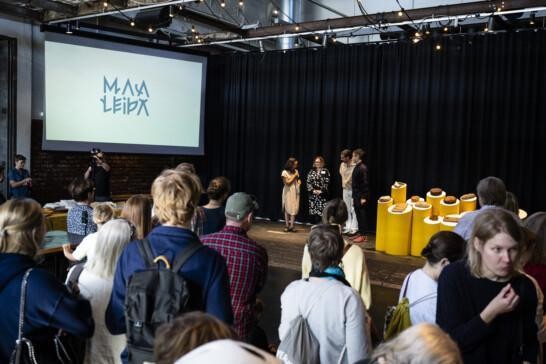Ecoblog
Advisory Board in Interview: Hanna Guttorm

We asked the members of our Advisory Board four questions about how IHME Helsinki’s goal of combining art, science and climate work has progressed in four years. Hanna Guttorm, a senior researcher in indigenous studies at the University of Helsinki, has been part of the advisory working group for a year now.
1) When we started our collaboration four years ago with the new direction, we wanted to bring together art, science and climate work in our programme and to support long-term collaborations both with institutions and artists. How do you think we have succeeded in this?
I have been involved as an Advisory Board member for about a year. I am happy and proud to be involved in an activity in which art is so consciously and comprehensively part of this time of the necessity of practising and implementing the sustainability transition. Organizations must take the sustainability transition seriously in their own activities, and I think that IHME Helsinki is very exemplary, brave, and unyielding in that regard. It is brave to dare to slow down, even though society otherwise seems only to be increasing the pace, of course, also under the guise of the urgency of the sustainability transition. However, sustainability change only happens through reduction and quietening down, and through committing to long-term work. Climate-conscious choices can be seen in all of IHME Helsinki’s activities, and the core of those activities is widely distributed to the public, also increasing social sustainability.
2) As commissioners we have rethought ways of collaborating with international artists and how to make it possible for the work of the artists to be seen and developed abroad. One of the methods that we have been testing is that, instead of transporting a large body of work from one continent to another (emissions), we have collaborated with artists in their long-term projects that take place in their home countries, supporting ongoing projects with local communities in order to root resilient practices. What differences do you see between this approach and the postcolonial project?
I think the answer is already in the question. IHME Helsinki does not move large audience groups from one place to another, nor strives to introduce globally significant artists to a privileged and well-resourced art world, but responds to the debt caused by various types of exploitation in the Third World by questioning the prevailing power structures and acting differently from the norm idea of transporting art works from one place to another. IHME Helsinki supports locally significant processes in their own contexts, directing resources and the art experience as widely as possible to ordinary people, not primarily to the Western art elite.
3) What is the most topical question in contemporary art today from your perspective, in the times of poly-crises we are living in? (if you like, please reflect on this from the perspective of art&science/research)?
I think the most topical question today is how art or art&science manages to reach even those who have not yet recognized the existence of poly-crises. That reaching should be open, caring, and inviting, so that the emotions that arise are bearable and able to create hope – or safe spaces to grieve, by which I mean soft spaces, like in hospicing care, to allow some unnecessary and even harmful practices to die, even though they were once also beloved. Scientific knowledge, as such, with which the world already is overloaded, does not often succeed in that, but can create emotions of despair, anxiety, and fear, which are then easier to prevent by denying or counter-attacking that knowledge.
4) You are all working more or less full time in the academic context, too. How do you see the ecological turn (sustainability transition) taking place in that context, is science-making changing with the world, and how?
This is a very dear, and hard, question for me. I have realized that many climate scientists have felt that they have failed in their work after seeing that, despite decades of alarming research results, no significant societal change has occurred. I recognize that frustration and I have thought a lot about how science should be done, presented, and written, so that, in addition to knowledge, it would also touch and impress, make people act and feel differently. Also, as part of our academic practices we do things that cause emissions, e.g. travel around the world without thinking too much about the climate footprint. We nevertheless feel the cause is good. We should dare to look in the mirror and see where we truly could do less, and what would be the next step(s) after attaining the knowledge that this lifestyle causes climate change. How could we consume less in science? In this endeavour young students should be listened to more – they are used to living on a low budget and can see through the things we take for granted.


